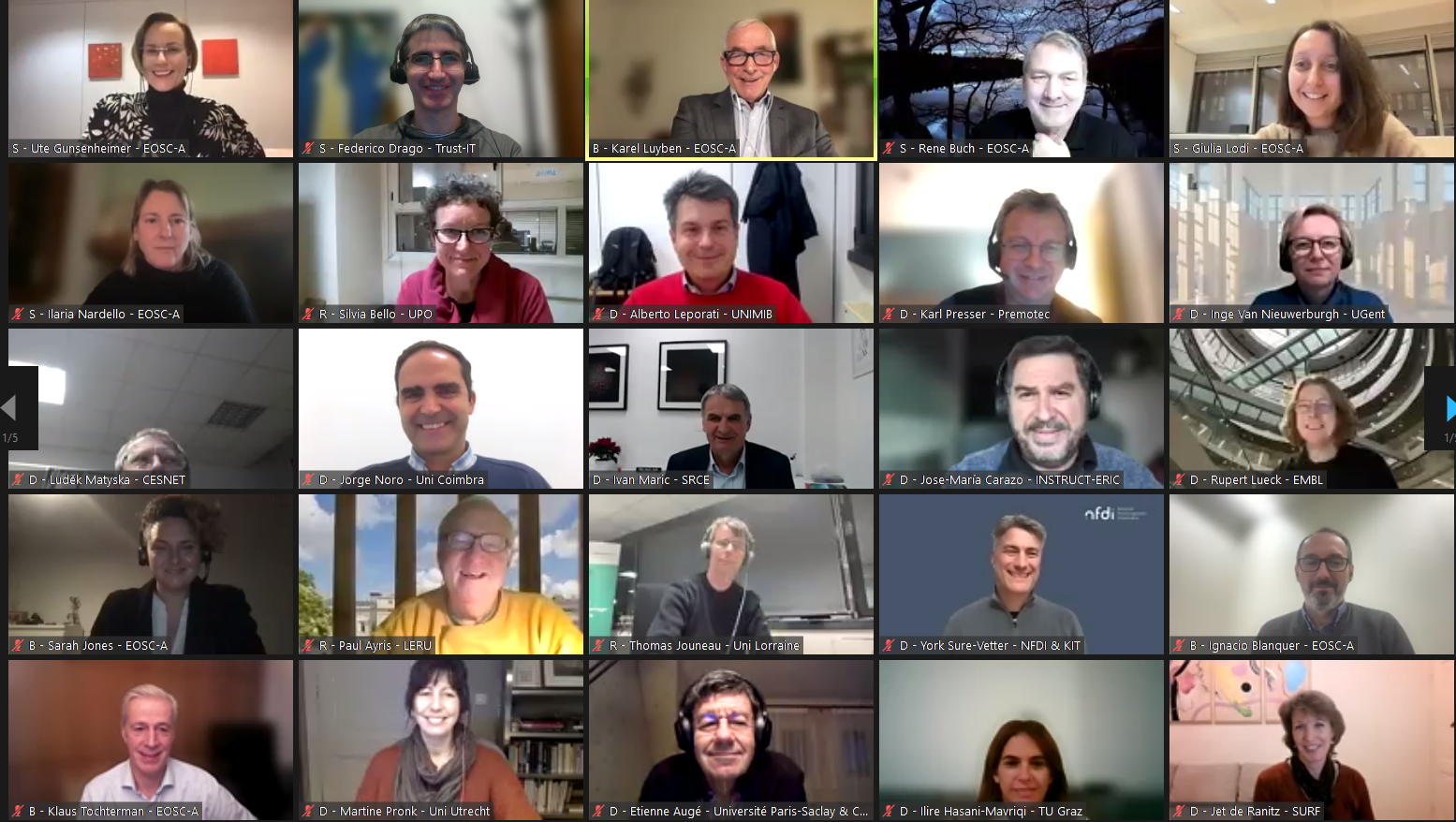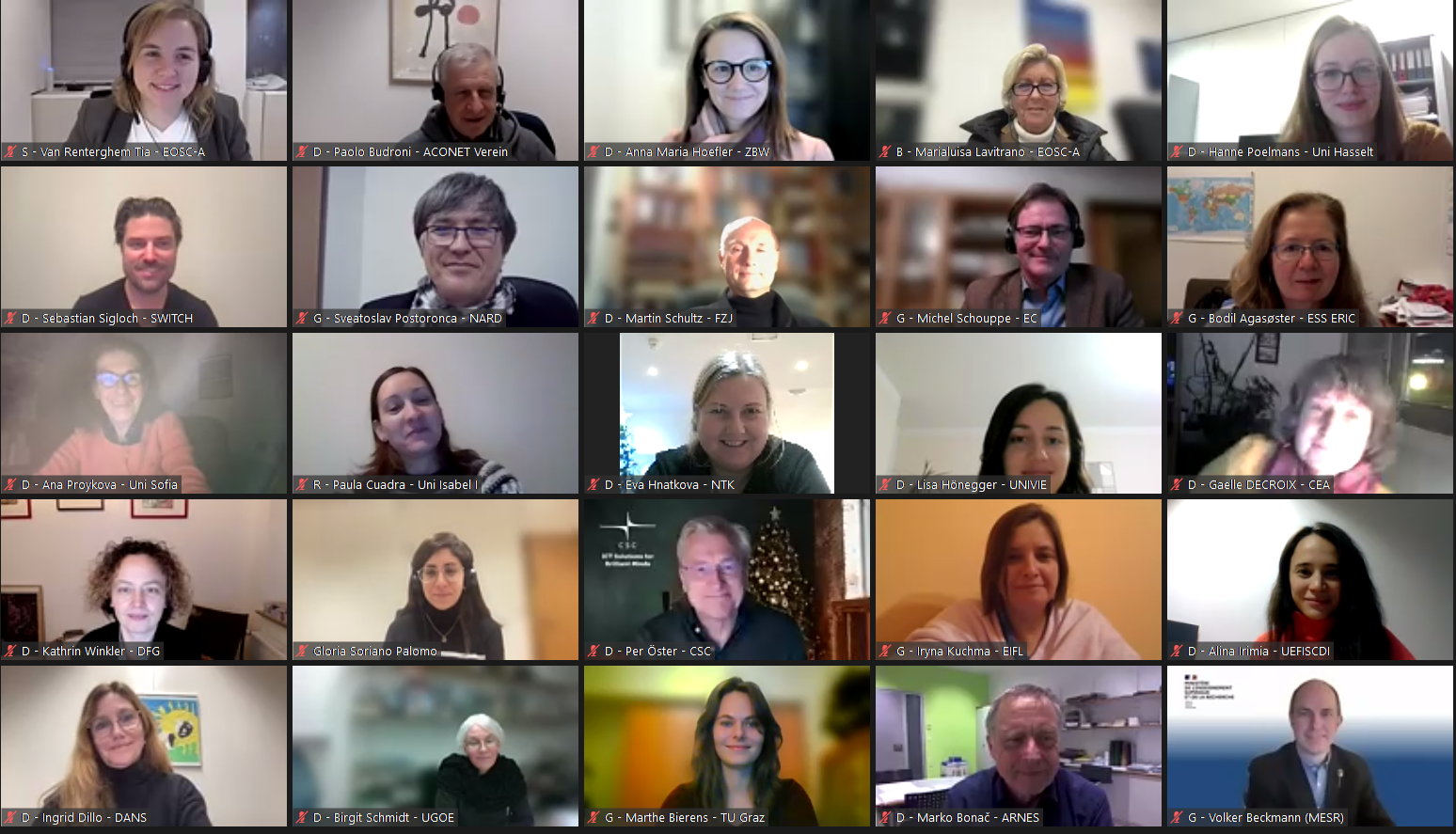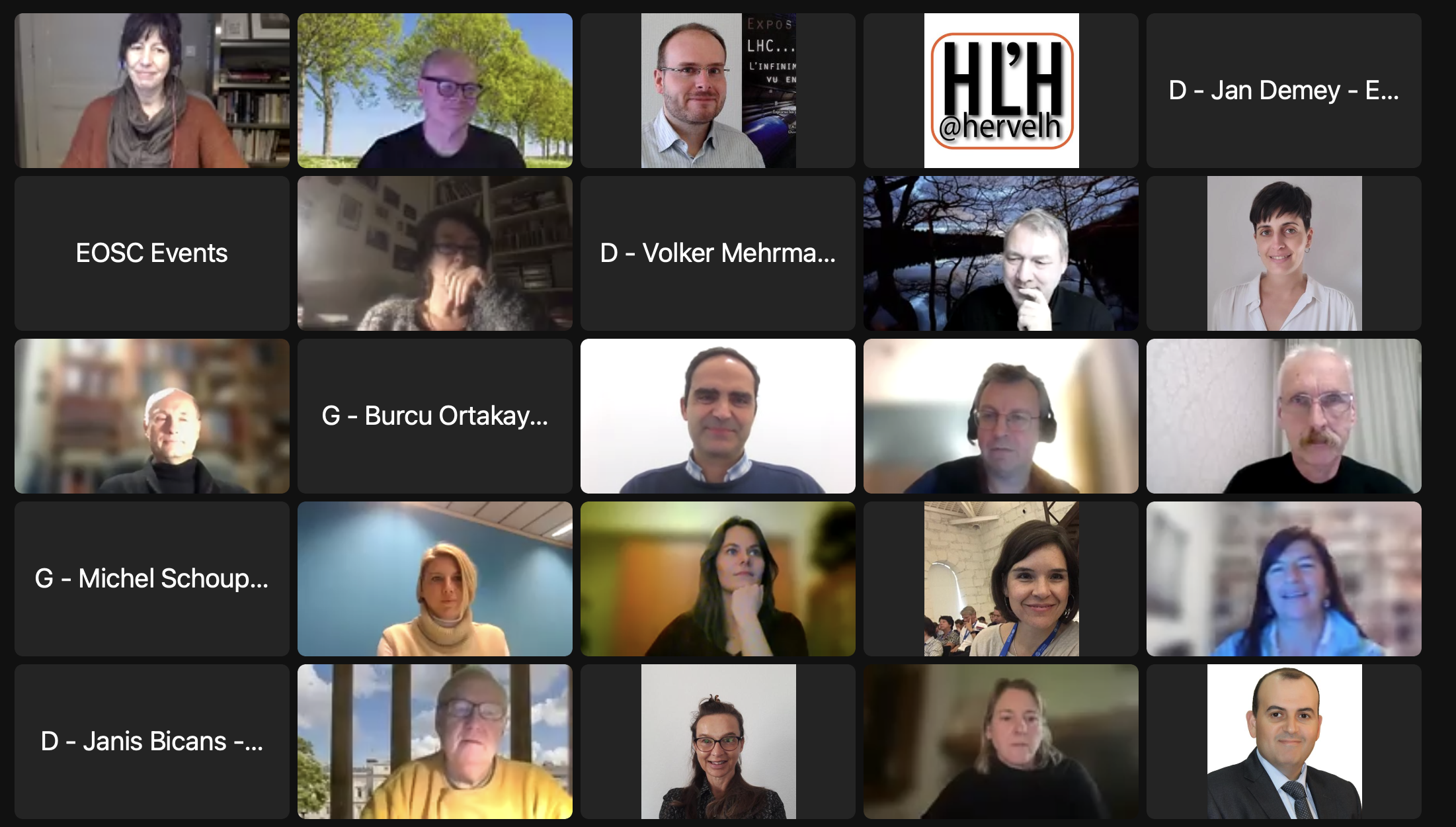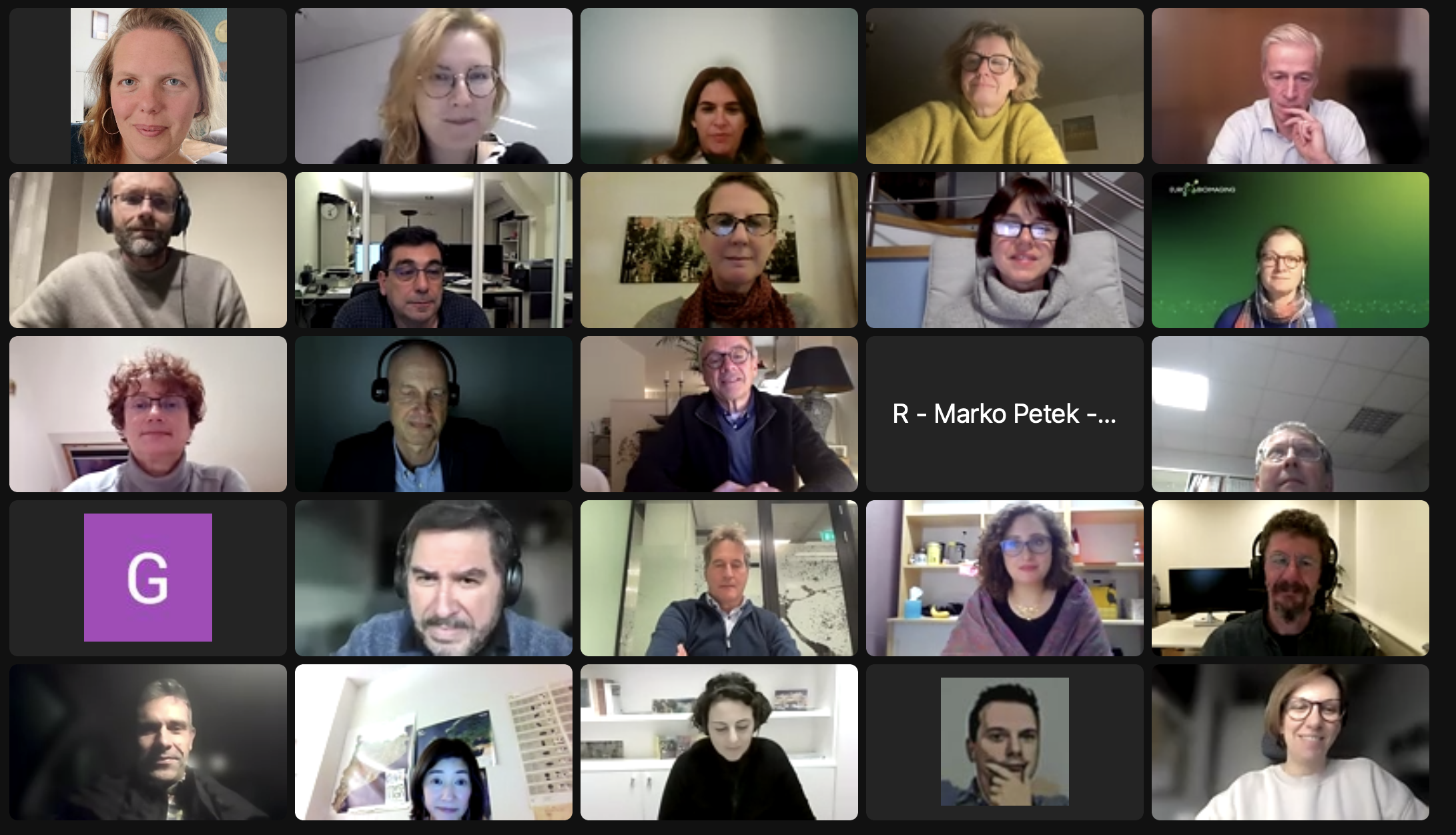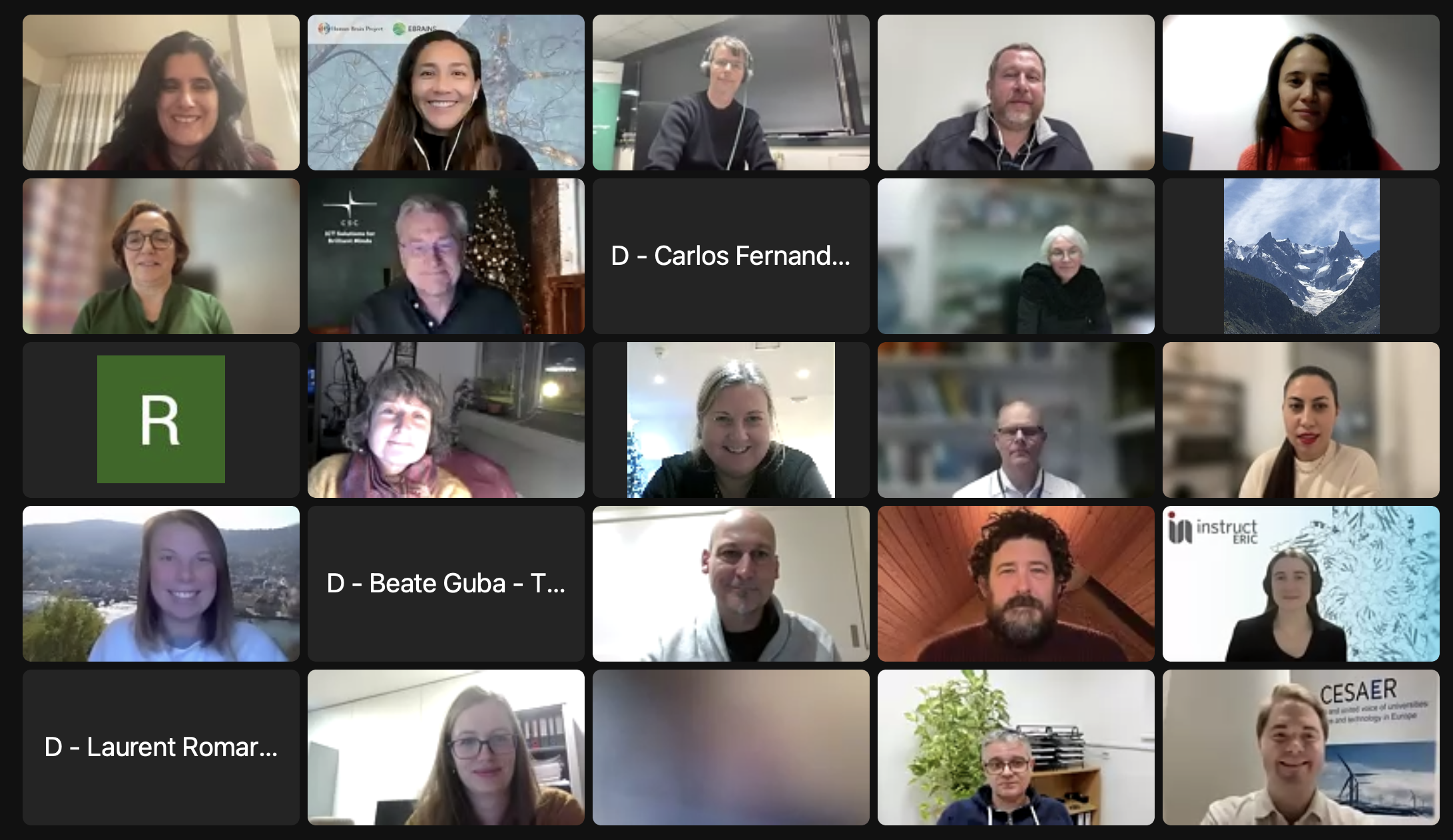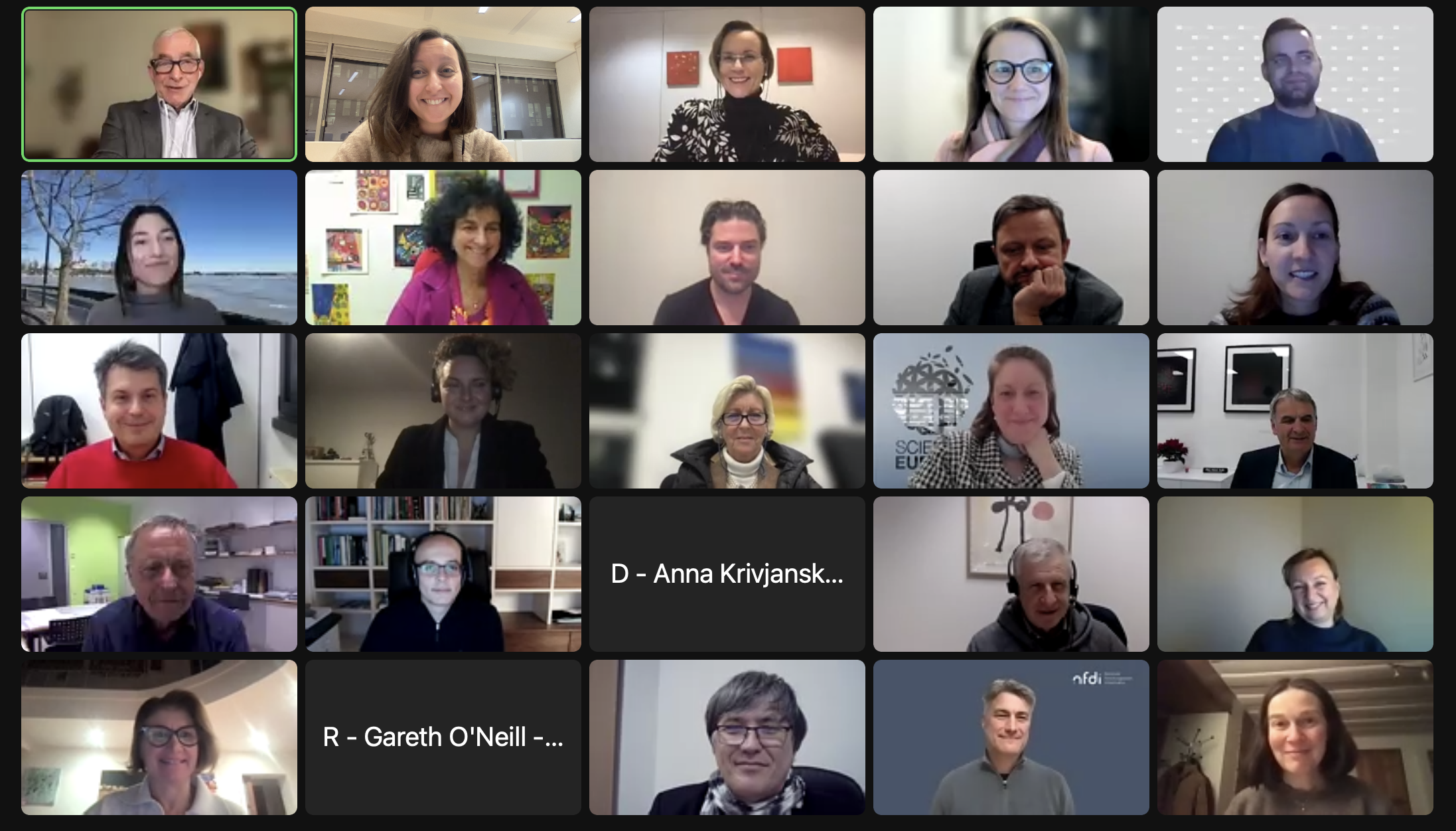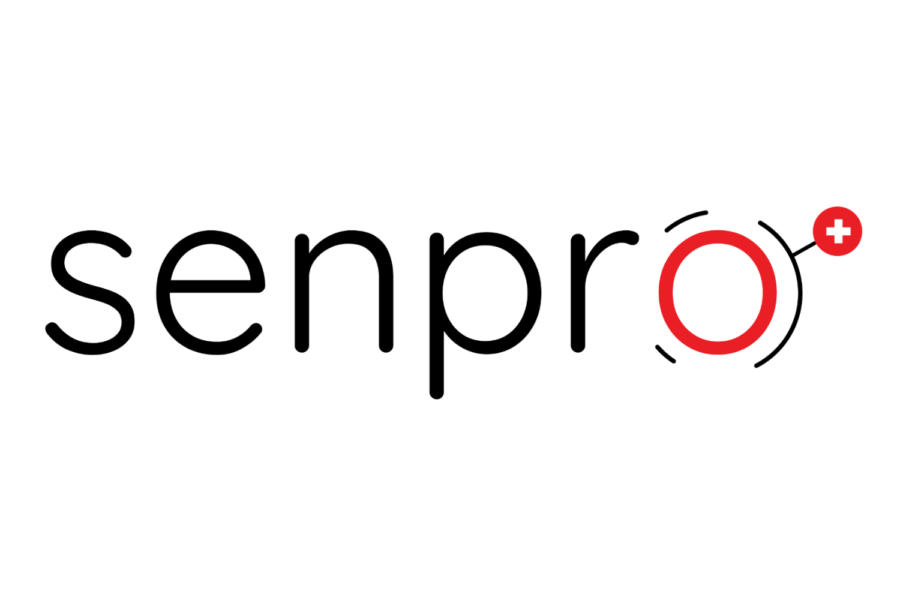The EOSC Association (EOSC-A) General Assembly met for the 5th time last week in an online meeting of more than 200 delegates, observers and guests. The lunch-to-lunch meeting was held 28-29 November. Day one was dedicated to procedural matters, including the election of the Association’s president and two board directors, while day two featured two interactive breakout sessions, one dedicated to each of the 13 EOSC-A Task Forces and the second to showcasing use cases from the EOSC Partnership’s Additional Activities Plan (AAP).
New members and observers
The meeting began with a welcome and orientation from EOSC-A President Karel Luyben, who quickly moved to the introduction of the organisations set to become new members and observers of EOSC-A. A brief presentation was given by a representative from each organisation that included its motivation for joining the growing Association. Online voting by the EOSC-A delegates confirmed the acceptance of the eight new member organisations and four new observers. Among these are six European research universities, four research infrastructures, including one ERIC, a digital services provider and a national research institute, all spread across 11 European nations. One current observer, Instruct-ERIC in the UK, elevated its status to member. More information on the new members and observers can be found here.
SRIA 1.1 approved
The next vote for the member delegates was to adopt the Partnership’s updated Strategic Research and Innovation Agenda, SRIA 1.1, and its Multi-Annual Roadmap (MAR) 2023-24. The MAR, which informs decision-making at the European level, has been substantially updated to prepare for the next two-year period of the European Commission’s Horizon Europe framework programme. The updated documents were duly approved by the General Assembly.
EOSC-A ESFRI RIs Working Group approved
The GA likewise voted to approve the formation of a new EOSC-A operational body, the ESFRI Research Infrastructures (RIs) Working Group. The WG gives a specific role to EOSC-A’s ESFRI RIs to better define their needs relative to EOSC and their positioning in the EOSC ecosystem. Ultimately the goal with this WG is to facilitate uptake of Open Science and FAIR data practices by the RI’s large and largely coherent scientific communities
Board elections, work plan and budget
The newly accepted EOSC-A members were immediately able to exercise their voting rights in the election of the president and two board director positions whose mandates expire at the end of 2022. The president of the EOSC Association will remain Karel Luyben (CESAER), while the two continuing board directors are Ignacio Blanquer (Technical University of Valencia) and Sarah Jones (GÉANT). The newly elected president and directors will preside for three-year terms (2023-2025), in line with the Association’s statutes. All three ran unopposed, but have nonetheless been elected by the required “double majority”—winning the votes of a two-thirds majority of EOSC-A delegates together with a two-thirds majority of EOSC-A Mandated Organisations. More on the elections can be found here.
The formal part of the GA wrapped up with GA approval of the EOSC-A Board’s Work Plan and budget for 2023.
Task Forces and use cases
Day 2 of the meeting consisted of two interactive breakout sessions. The GA delegates first chose their spots among the virtual breakout rooms for each of the 13 EOSC-A Task Forces, where they were able to interact directly with the Task Force co-chairs through video and online polling tools. These interactions produced new feedback for the Task Forces that will be compiled, analysed and brought to bear on their work.
After a digital coffee break, the delegates again scattered to various virtual rooms to view member- and observer-based presentations on EOSC use cases. These were selected from the Secretariat’s recent surveying efforts to build out the EOSC Partnership’s Additional Activities Plan (AAP) for 2023.
